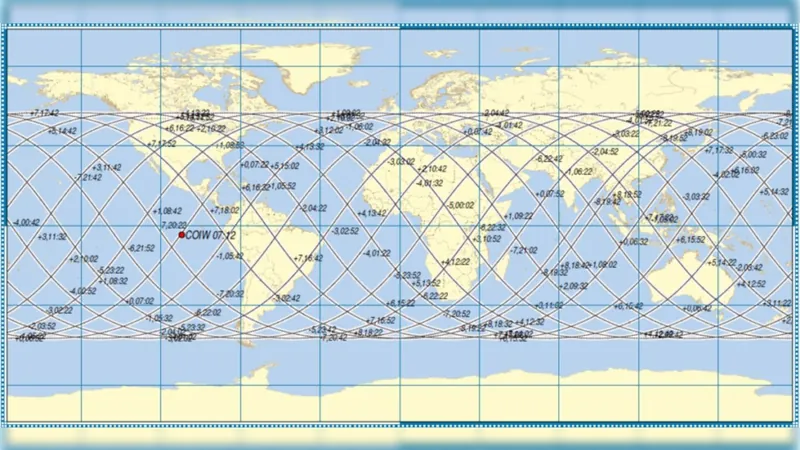
Don’t Miss the Spectacular Arrival of Comet Atlas C/2024 G3 in January 2025!
2025-01-11
Author: Liam
Introduction
Get ready, skywatchers! A celestial spectacle is on the horizon as the stunning Comet Atlas C/2024 G3 approaches its moment of glory. Scheduled to reach its perihelion—the point in its orbit where it’s closest to the sun—on January 13, 2025, this comet will also be at its nearest point to Earth on the same day. This rare alignment makes it a strong contender for the title of the brightest comet of the year, and with no other comets expected to grace the night sky in 2025, you won’t want to miss this captivating event!
Discovery and Characteristics
Discovered on April 5, 2024, by the Asteroid Terrestrial-Impact Last Alert System (Atlas), a network of telescopes dedicated to tracking potential earth-threatening asteroids, Comet C/2024 G3 hails from the mysterious Oort Cloud. This ancient region holds unsung treasures and remnants from the very dawn of our solar system. The anticipation builds as the comet approaches its perihelion, sitting at about 13.5 million kilometers from the sun. For some perspective, that’s significantly closer than Mercury, which orbits at around 47 million kilometers.
Brightness and Viewing Conditions
Excitement is mounting as current projections from the Planetary Society suggest that C/2024 G3 could reach an impressive brightness of magnitude -4.5, comparable to the dazzling light of Venus! This makes it likely to be visible to the naked eye, especially for those lucky enough to be situated in the southern hemisphere. But, there’s a twist—this comet's close encounter with the sun raises questions about its survival. With indications that this isn’t C/2024 G3's first rodeo (with its last close approach thought to have occurred around 160,000 years ago), the intense solar heat may pose risks to its structural integrity. What will happen if it survives? Observers in southern skies could be treated to a breathtaking view in the evening sky!
Observing the Comet
Mark your calendars for January 13, 2025, when the comet will grace the western horizon just after sunset for those in the southern hemisphere. Those in the northern hemisphere, however, may find it difficult to catch a glimpse due to its low position during twilight.
Safety and Recommendations
As you prepare to witness this extraordinary phenomenon, please proceed with caution! Experts recommend only seasoned astronomers attempt to observe C/2024 G3 directly. Staring at the sun without proper filters can lead to devastating eye damage, which easily takes the excitement out of a celestial event. Adding to the challenge, the moon will be in its waning phases, which could further hinder visibility.
Tools for Observation
For a better experience, enthusiasts are encouraged to bring out their binoculars or telescopes to enhance their view of this elusive wanderer. Don’t forget, you can track Comet C/2024 G3’s journey with resources from the Solar and Heliospheric Observatory's Lasco C3 coronagraph as well as through platforms like the IAU Minor Planet Center and the Comet Observation (COBS) database.
Conclusion
Stay tuned for more updates as the comet barrels through our solar neighborhood—this is one astronomical show you won’t want to miss!









 Brasil (PT)
Brasil (PT)
 Canada (EN)
Canada (EN)
 Chile (ES)
Chile (ES)
 Česko (CS)
Česko (CS)
 대한민국 (KO)
대한민국 (KO)
 España (ES)
España (ES)
 France (FR)
France (FR)
 Hong Kong (EN)
Hong Kong (EN)
 Italia (IT)
Italia (IT)
 日本 (JA)
日本 (JA)
 Magyarország (HU)
Magyarország (HU)
 Norge (NO)
Norge (NO)
 Polska (PL)
Polska (PL)
 Schweiz (DE)
Schweiz (DE)
 Singapore (EN)
Singapore (EN)
 Sverige (SV)
Sverige (SV)
 Suomi (FI)
Suomi (FI)
 Türkiye (TR)
Türkiye (TR)
 الإمارات العربية المتحدة (AR)
الإمارات العربية المتحدة (AR)